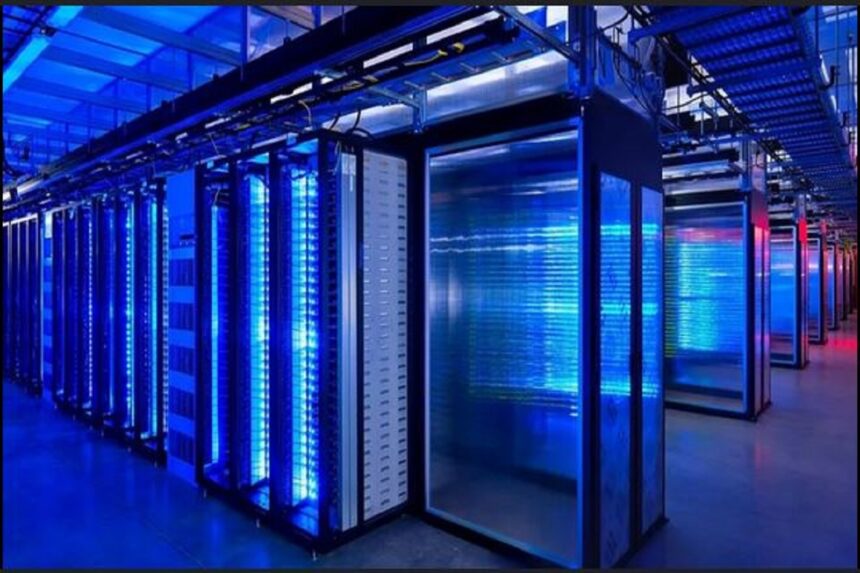Artificial intelligence (AI) is revolutionizing industries worldwide, but it’s not without significant environmental and public health consequences. Researchers have found that data centers supporting AI could contribute to as many as 1,300 premature deaths annually in the United States by 2030 due to air pollution. Here’s an in-depth look at the findings and their implications.
How AI Contributes to Air Pollution
Data Centers: The Backbone of AI Technologies
Data centers are essential for AI operations, housing the servers and systems needed for complex computations. However, their energy demands are staggering. According to the World Economic Forum, the computational power dedicated to AI doubles approximately every 100 days, leading to a massive increase in electricity usage. Most of this energy comes from fossil fuels, which emit greenhouse gases and harmful pollutants.
Fossil Fuels and Their Environmental Toll
Electricity generation from fossil fuels is a leading contributor to air pollution. The combustion of coal, oil, and natural gas releases particulate matter, smog-forming pollutants, and toxins that can cause respiratory illnesses and cancers. A 2021 study by Harvard University estimated that air pollution from fossil fuels is responsible for one in five deaths globally.
Public Health Impacts of AI-Driven Pollution
Early Deaths Linked to Data Center Emissions
Research from Caltech and UC Riverside indicates that air pollution from data centers could lead to 1,300 premature deaths annually in the U.S. by 2030. These health impacts are particularly severe in low-income communities, which often bear the brunt of industrial pollution.
The Cost of Public Health
The estimated public health costs associated with data center pollution could exceed $20 billion annually by 2030. These figures, derived from Environmental Protection Agency (EPA) methodologies, highlight the urgent need for industry accountability.
AI’s Environmental Impact: A Comparative Perspective
Data Center Emissions vs. Airline Industry
In 2022, data centers in the U.S. emitted over 106 million metric tons of greenhouse gases, comparable to the emissions of the domestic commercial airline industry. This startling comparison underscores the scale of the problem.
Training AI Models and Pollution
Training a large language model at the scale of Meta’s Llama-3.1 generated air pollution equivalent to more than 10,000 car trips between Los Angeles and New York City. Meta’s plans to build a new data center in Louisiana have also sparked concerns about localized environmental and health impacts, though the company has not commented on the matter.
Addressing the Environmental Costs of AI
Cleaner Energy Solutions
Some companies are transitioning to nuclear and renewable energy sources to mitigate their environmental impacts. While these efforts are promising, the adoption rate remains slow compared to the growth of AI-driven energy demands.
Reporting and Accountability
The researchers recommend mandatory reporting of air pollution caused by power generation for data centers. They also suggest compensating affected communities to address environmental injustices. This would help balance the disproportionate impact on low-income areas, which are often located near industrial sites.
Legislative Actions and Industry Standards
Legislation to mitigate the environmental impacts of AI is under consideration. For instance, several U.S. Senators, including Sheldon Whitehouse and Elizabeth Warren, have urged the Biden administration to uphold clean air and water standards while supporting AI advancements. “We urge you to ensure the energy needs of technology companies are not prioritized over the needs of households,” they emphasized in a recent statement.
Future Projections and Challenges
Escalating Energy Demands
The Department of Energy estimates that data center energy usage could double or triple by 2028. This increase will likely exacerbate pollution and its associated health risks unless significant changes are implemented.
Balancing AI Growth with Sustainability
While AI offers transformative benefits, researchers stress the importance of recognizing and minimizing its negative impacts. As Adam Wierman, director of Information Science and Technology at Caltech, noted, “We need to make sure that we have our house in order.”
FAQs: Understanding AI’s Environmental Impact
1. Why do data centers contribute to air pollution?
Data centers require large amounts of electricity, much of which is generated from fossil fuels that emit harmful pollutants during combustion.
2. How does AI’s energy consumption compare to other industries?
In 2022, emissions from U.S. data centers rivaled those of the domestic commercial airline industry, highlighting their significant environmental impact.
3. What can be done to reduce data center pollution?
Transitioning to cleaner energy sources, enforcing stricter environmental regulations, and implementing energy-efficient technologies are key strategies.
4. Who is most affected by data center pollution?
Low-income communities are disproportionately affected due to their proximity to industrial sites and limited resources to mitigate health risks.
5. Are there any policies addressing AI’s environmental impact?
Yes, legislation is being proposed to enforce stricter environmental standards and promote sustainable practices in the AI industry.
AI technologies promise remarkable advancements, but they come with significant environmental and public health costs. Addressing these challenges requires collective action from policymakers, industry leaders, and researchers to ensure a sustainable and equitable future for all. Researchers also stress the need for transparency and accountability, urging tech companies to report emissions and compensate affected communities. As Shaolei Ren, a co-author of the study, warned, “If you have family members with asthma or other health conditions, the air pollution from these data centers could be affecting them right now. It’s a public health issue we need to address urgently.”
